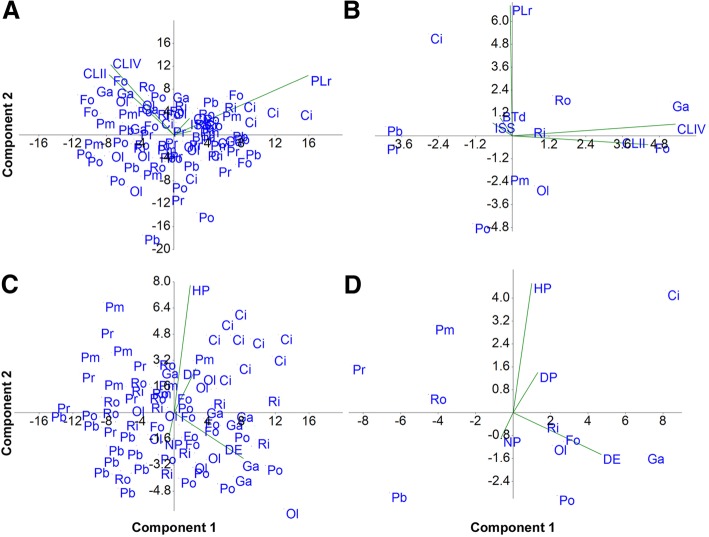Fig. 4.
Principal Component Analysis (PCA) plots showing the multivariate variation among animals (a and b) and eggs (c and d) in terms of morphometric data. Vectors (green) indicate the direction and strength of each morphometric variable to the overall distribution. a Morphometric data of animals of the different populations. b Mean values of the morphometric data of animals in the different populations. c Morphometric data of eggs of the different populations. d Mean values of the morphometric of the data of the eggs in the different populations. Populations: CI = Clare Island; Fo = Formigine; Ga = Gaggio; PB = Passo Ballino; PM = Piane di Mocogno; Po = Pondel; Pr = Prodo; Ol = Olbia; Ri = Riccò; Ro = Rocchetta; for more information see Table 1. Morphometric data (according to Table 2, Additional file 1: Table S3): BTd = pt buccal tube diameter; ISS = pt insertion of the stylet support point; CLII = pt second claw pair; CLIV = pt fourth claw pair; PLr = pt macroplacoids row; DE = diameter of the egg; DP = diameter of the egg process; HP = height of the egg process; NP = number of processes per hemisphere. The first and second principal components explained the following variance, respectively: a 45.30 and 40.51%; b 53.70 and 39.68%; c 77.18 and 14.34%; d 81.81 and 14.39%

